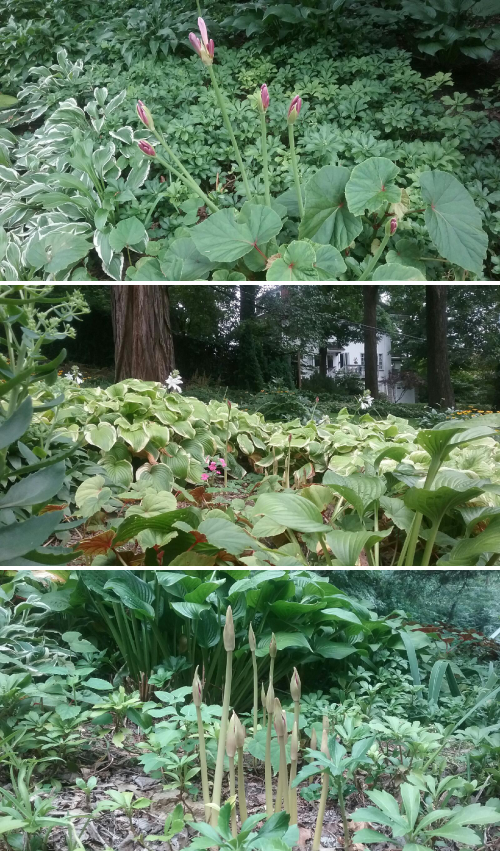It was fun to predict when the august lilies would pop out of the ground this year. It was a pretty hot july here in cincinnati, and we had about 2 days that cooled off to the low 60s or maybe even the upper 50s at night. This made me think the bulbs would be on alert for the next rainy period. So after three days of rain, not terrible rain but steady moisture, i had 8 stalks of august lily appear from the ground, the next morning 32, the next morning (after a little more rain and cooler daytime and night time temps) i had more than 80. This afternoon (still cool but no more rain) there were more than 250 august lilies poking their heads out of the soil.
Biological clocks are amazing – (as an aside, one cover for JBC i did for someone working on biological clocks I have framed… he actually won a nobel prize for his work on bioloical clocks. I posted it here and also did an inside cover illustration (which i would have wished had been accepted as a cover here) but i dont think i have ever done much research on biological clocks in august lilies.
Hardy members of the amaryllis family, emerge as astonishingly fast, with no foliage (which is early green and then dies back in spring) popping up from underneath hostas, begonias, ground covers etc. They also are known as Resurrection lilies, autumn amaryllis, august lilies, naked ladies, and as Lycoris squamigera, their botanical name.
Last year i dug up and replanted clumps (way over due…. decades over due) of 30 and 40 packed bulbs, so tight none could “breathe”. About three years ago i had over 200 blooms, then less and less and I didn’t know if it was the weather or that they were crowded. I did not anticipate that the new replants would bloom. Some certainly have.
I found this cute post from Stanford… Hacking the biological clock . and a bulb society has a couple posts here.
FOR me….. it looks, year after year, it is a combination, first cool nights, and lots of water.
and another post HERE that mentions the medicinal (toxic actually) compounds, and also this might explain why deer dont really like to eat my august amaryllis… or so i will call it from now on.
